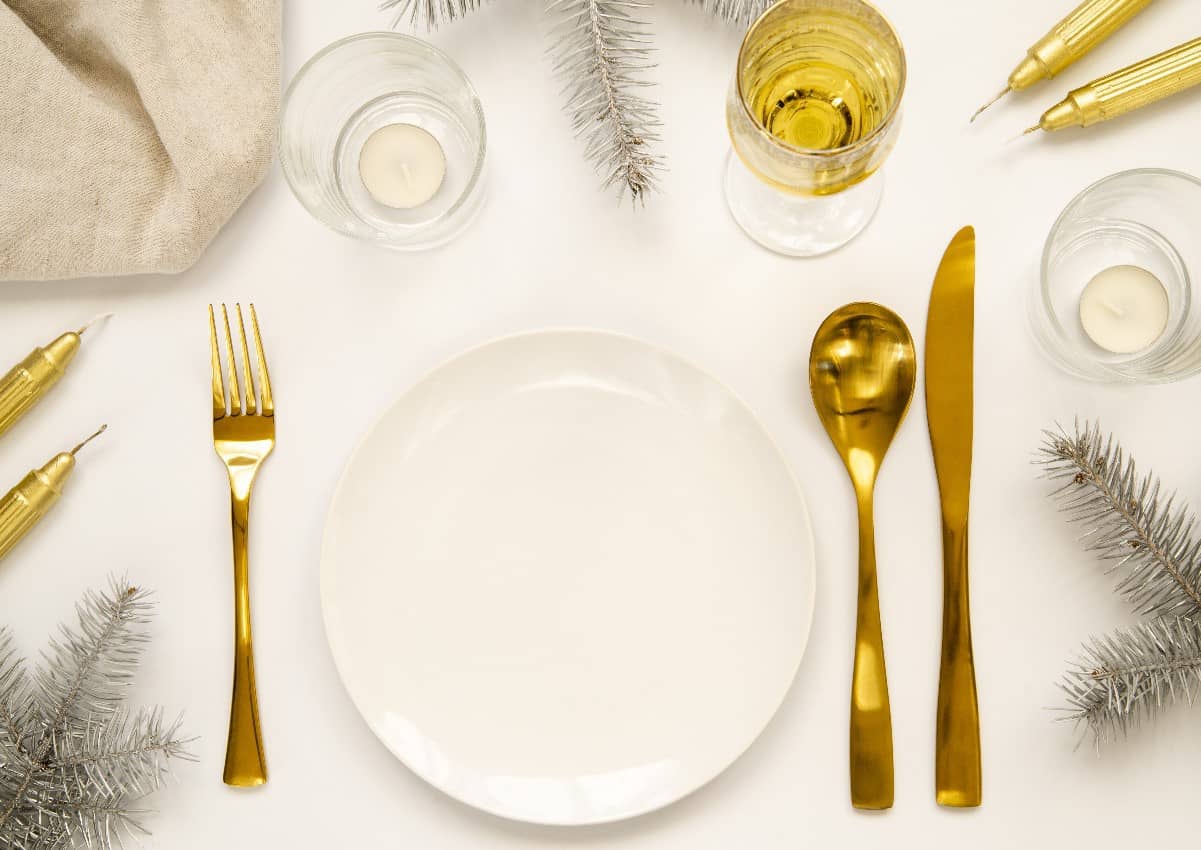
Awkwardness and embarrassment during elegant parties are not uncommon feelings appearing at the sight of number of cutlery on both sides of the plate. Therefore, in order not to commit a faux pause, it is worth knowing what the cutlery is used for and in what order to reach for it
The amount of cutlery at our table during a refined dinner depends mainly on the menu planned for it. For example, if we plan to serve two starters, we can be sure to have two sets of cutlery dedicated to them on the table. It is similar with the number of first courses, main courses, and desserts
In order to answer this question, we should first explain that the cutlery is arranged on the table in the order the dishes are served. Therefore the cutlery which is furthest away from the plate should be used first and gradually replaced with the next courses served by the waiter. In this way, as time goes by, the amount of cutlery on the table will gradually decrease until, at the last course, we are left with the last set, usually dedicated to hot dishes
So we already know how to use cutlery in a situation when there is more than one set on the table. However what if we are the organisers of a party and we want to arrange cutlery according to the rules of savoir – vivre?
First of all, it’s worth knowing that knives and spoons should be placed on the right side of the plate, according to the order of serving dishes, and forks on the left side . Cutlery for dessert is usually placed above the plate, following the same rule concerning the order of meals served
It may seem that the amount of cutlery on the table is a result of care that the taste of new dishes is not disturbed by the remains of previous dishes. Nothing more misleading. In practice, the amount of cutlery placed on the table results from the fact that each of them is intended for eating different meals. There is no such thing as one universal soup spoon. Soups with chunks of vegetables are eaten with a different spoon than those with a creamy consistency. In the former case, the spoon has an oblong shape, while in the latter it is characterized by a round scoop. The situation is similar with forks and knives – each of them is chosen according to the type of meal served
The last question which troubles people attending elegant dinners is what to do with cutlery when we have finished the meal or do not want to continue it. In such a situation one should remember not to put cutlery directly on the table under any circumstances. Such behaviour may not only soil the tablecloth but it may also be perceived as inelegant. Besides, placing cutlery during or after the meal is a kind of code for the waiter, which makes it easier for him to serve the guests
Therefore, when we want to make a break in the meal, we should put the cutlery on the plate in such a way that its handles stick out beyond the plate, and the tips touch on the upper part of the plate, thus forming an inverted V shape
When we are ready to serve the second course, the cutlery should be arranged crosswise on the plate. On the other hand, if we do not want to continue the meal at all, the cutlery should be placed on the plate in the middle, vertically, one next to the other. Cutlery can also be used to show whether we liked the meal or not. In the former case, the waiter should place the cutlery horizontally in the middle of the plate after the meal is finished. In the latter case, we should place the cutlery as if we wanted to signal a break in eating by putting the knife between the fork’s tines.
To sum up, if we want to use cutlery in a correct way we should remember one rule – we should always first reach for cutlery which is furthest from the plate